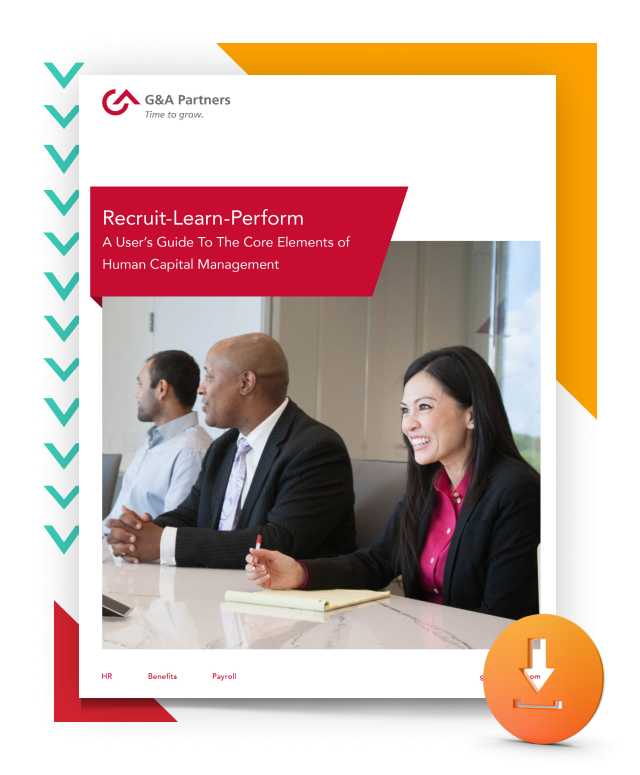Part 2: Eliminate Unintentional Bias & Post on Diversity-Focused Platforms
If your business strives to build a well-rounded workforce by hiring qualified candidates of diverse ages, races, cultural backgrounds, religions, abilities, and gender identities—your recruiting strategy should be tailored to accomplish that goal. Your online job postings are your starting point and the effort you put into creating and posting job descriptions that focus on achieving your hiring goals will directly impact the applicants who respond.
This 2nd installment in our two-part series provides additional tips and recommendations to build a job posting strategy that helps you find and appeal to a highly qualified and diverse pool of job candidates.

Demonstrate Diversity: Use Inclusive Language and Remove Exclusionary Requirements
After you write the initial draft of your job posting, review it thoroughly to ensure it will appeal to candidates with the skills, qualifications, and experience needed for the position—regardless of their race, gender, age, or disability. During the review, focus on the language you use throughout the description and the requirements you attach to the job.
Following are tips that can help you eliminate unintentional bias in your job descriptions and increase diversity in your hiring process:
- Use sensitive, inclusive language throughout the job description.
Replace gender-specific pronouns (he, she) with neutral pronouns (they), remove all references to race or religion, and avoid descriptive phrases that can be construed as discriminatory, such as “young and energetic” or “seasoned professional.” Many job ads unintentionally use language that is gender-specific and discriminatory and, as a result, qualified candidates are reluctant to apply because the language in the job description is telling them the company is not an inclusive workplace, according to Lynne Kurter in Forbes’ “Hiring Managers, Here Are 4 Useful Tips To Create More Inclusive Job Descriptions.”
- Remove unnecessary educational or work experience requirements.
While some professions require specific degrees and training—the medical and engineering disciplines, for example—other jobs have flexible requirements and can be filled by a diverse range of candidates. However, many workers with “nontraditional” skillsets, employment history, or educational backgrounds do not pursue specific job postings because of academic or experience requirements that may not necessarily be required for the job. To appeal to a larger and more diverse talent pool, clarify must-have and nice-to-have education and skills. Also, focus more on performance objectives and provide details about what a person needs to be able to do and achieve in the position.
- Tailor your job postings to workers of all abilities.
Some employers include outdated phrases in job descriptions that inadvertently exclude people with disabilities, such as “must be able to lift 50 pounds” or “must have a driver’s license.” Exclude these phrases (or reword them) to ensure you are truly representing the actual job requirements. “Make sure your job postings are welcoming to workers of all abilities by advertising when there are accommodations like flexible hours or telework policies that would appeal to workers with disabilities,” states Monster’s “6 Tips Inclusive Recruitment Writing.” “Also, highlight access, accommodations, and flexibility to let disabled applicants know that your workplace values them.”
- Tailor your job postings to workers of all abilities.
Some employers include outdated phrases in job descriptions that inadvertently exclude people with disabilities, such as “must be able to lift 50 pounds” or “must have a driver’s license.” Exclude these phrases (or reword them) to ensure you are truly representing the actual job requirements. “Make sure your job postings are welcoming to workers of all abilities by advertising when there are accommodations like flexible hours or telework policies that would appeal to workers with disabilities,” states Monster’s “6 Tips Inclusive Recruitment Writing.” “Also, highlight access, accommodations, and flexibility to let disabled applicants know that your workplace values them.”

Online Optimization: Improve Your Job Posting’s Search Engine Ranking
Most people search online job platforms and social media sites during their job hunt, so you should optimize job postings to increase your chance of landing a top position in search engine rankings. The higher your ranking, the better your chances of capturing the attention of qualified candidates.
Here are 5 tips that can help your business optimize online job postings:
- Start with a simple, inclusive job title.
Like anything else online, your job posting’s title can mean the difference between a qualified candidate clicking on your listing or scrolling to the next posting. Make sure your headline is concise and creative and encourages job seekers from diverse backgrounds to investigate the job description further.
- Integrate strategic keywords.
Use online tools like Google Keywords Planner and SEMRush Keyword Magic Tool to find strategic keywords and keyword phrases that appeal to job seekers in your industry. Then, integrate select words or phrases in your job posting’s title and description to increase its search visibility. But beware: Using too many keywords can hurt your posting, so only use them where and when appropriate.
- Be detailed, but not wordy.
Use simple, straightforward language to communicate all job details and requirements. Be transparent about pay, job flexibility, and benefits in your posting. “Keep job postings short and organized with bullet points focused on the key skills and competencies needed for the position, states Nicole Brown, LMC, A Lennar Company, in Forbes’ “15 Ways To Get More Eyes On Job Postings.”
- Localize your listing.
Include information about the position’s primary work location (city and state) throughout the job posting. Remote and hybrid positions are in demand, so make sure you include those details in the title and description if it applies to the position.
- Include application instructions and contact preferences.
Tell potential candidates how to apply—or how to contact you—and what type of information you need to evaluate them for the position (resume, sample work, references, etc.).
Promote Inclusivity: Expand Your Talent Pool by Posting on Diversity-Focused Platforms
Once you've created a concise, inclusive, and optimized job description, carefully consider where to post it. Your job posting strategy should include large online job sites, but it should also incorporate platforms that target diverse groups of candidates.
Build a substantial list of job platforms to reach a broad range of candidates. Go beyond the obvious to include websites that serve minorities, persons with disabilities, and other characteristics.
— Tracy Winn, SHRM-SCP, G&A Partners’ senior HR Advisor
In addition, use your company's website, video channels, and social media accounts to consistently promote your organization and job postings. Don't be afraid to post job descriptions on sites like TikTok, Twitter, and YouTube.
Tracy Winn recommends posting on at least three sites that promote diversity, in addition to larger posting platforms like Indeed, Monster, LinkedIn, and Facebook.
Examples of inclusive job posting platforms include:
Minority-Focused Job Boards
- Diversity.com
- WorkplaceDiversity
- Black Career Network
- Black Jobs
- iHispano
- Hispanic/Latino Professionals Association
Female-Focused Job Boards
LGBTQ+-Focused Job Boards
Job Seekers with Disabilities-Focused Job Boards
Older and Retiree-Focused Job Boards
Military and Veterans-Focused Job Boards
Job Seekers with Criminal Records-Focused Job Boards
Partner with an Expert: Recruitment Process Outsourcing (RPO) Enhances Diversity Hiring
A professional employer organization (PEO) that offers a recruitment process outsourcing solution (RPO), like G&A Partners, can expand your hiring strategy and incorporate diversity recruiting into your company’s hiring program. An RPO can help you find high-quality and diverse job candidates while reducing your recruiting costs and ensuring that your hiring process is fully compliant at every stage.
“Finding and hiring the right employees is one of the biggest challenges facing today’s employers,” says Kristi Arcurie, Senior Strategic HR Advisor with G&A Partners. “RPO providers have access to a vast network of recruiters and applicants across multiple industries and geographic areas. We also have the tools to examine candidates beyond their resumes and assess personalities, skill sets, and other qualities—helping you to find and hire diverse, qualified candidates, so you magnify your company’s success and growth potential.”
RPO services include:
- Job design, descriptions and posting
- Candidate sourcing
- Candidate screenings, testing, and pre-hire assessments
- Background checks
- Applicant tracking
- Interviewing
- Final selection
- Onboarding
- Maintaining legal compliance
Missed PART 1? Find it here.
How G&A Can Help
G&A’s RPO solution is easy to use, cost-efficient and, most importantly, effective at identifying the best talent for growing companies. We combine the most advanced technologies with proven HR processes and best practices to deliver a high-tech, high-touch solution that complements PEO services.


